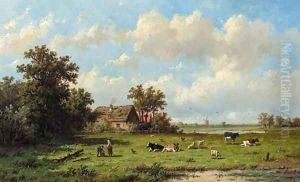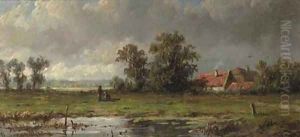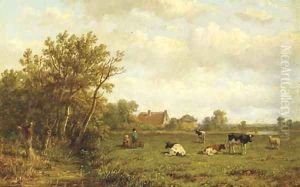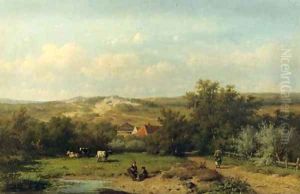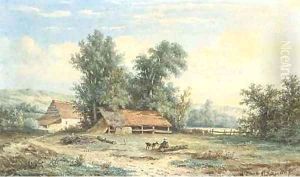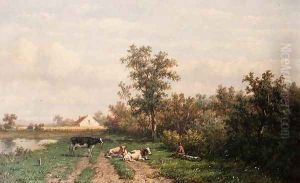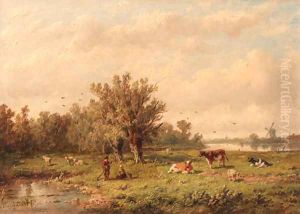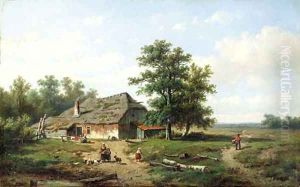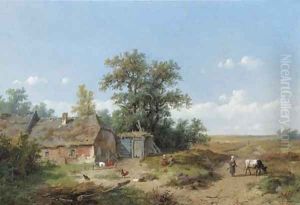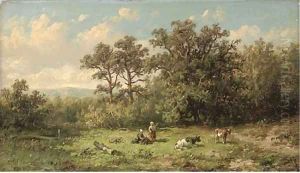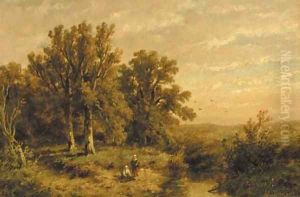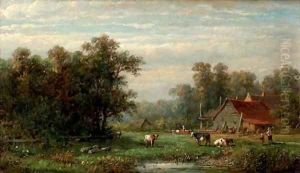Anthonie Jacobus van Wyngaerdt Paintings
Anthonie Jacobus van Wyngaerdt was a Dutch painter born on May 19, 1808, in Rotterdam, Netherlands. He was an influential figure in the Dutch Romantic movement of the 19th century. His work primarily involved genre scenes, portraits, and historical paintings which often depicted scenes from Dutch history, imbued with a romanticized aesthetic that was typical of the time.
Van Wyngaerdt received his initial artistic training at the Drawing Academy in Rotterdam. He later continued his studies at the Royal Academy of Fine Arts in Amsterdam. During his time in Amsterdam, he was greatly influenced by the works of the old Dutch masters as well as his contemporaries who were part of the Romantic movement in Europe.
Throughout his career, Van Wyngaerdt exhibited his works at various venues, including the annual Exhibition of Living Masters in the Netherlands. His paintings were well-received, and he gained a reputation for his meticulous technique and attention to historical detail. Despite the changing artistic trends over the decades, van Wyngaerdt remained committed to the Romantic style, which ultimately fell out of favor as the century progressed.
Van Wyngaerdt also played a role as an educator, teaching and influencing the next generation of Dutch artists. He was known to have been a dedicated teacher, passing on the principles of the Romantic movement while encouraging the development of individual artistic voices.
Anthonie Jacobus van Wyngaerdt's work is characterized by its rich color palette, dramatic lighting, and a sense of nostalgia for the past. His paintings are seen as a reflection of the national sentiment of the Netherlands in the 19th century, a period when there was a strong interest in the nation's history and cultural heritage.
He passed away on April 23, 1887, in Rotterdam. Today, his works are part of several Dutch museum collections and continue to be studied as examples of Dutch Romantic painting. Despite not being widely known internationally, van Wyngaerdt's contributions to Dutch art have cemented his place in the annals of 19th-century European art history.
